I Like America and America Likes Me | Joseph Beuys











‘For me it is the idea of the word that produces all images. It is the key sign for all forms of moulding and organizing. When I speak using a theoretical language, I try to induce the impulses of this power, the power of the whole understanding of language which for me is the spiritual understanding of evolution.’
But language is not to be understood simply in terms of speech and words. That is our current drastically reduced understanding of language, a parallel to the reduced understanding of politics and economics. Beyond language as a verbalization lies a world of sound and impulses, a language of primary sound, without semantic content, but laden with completely different levels of information.
Every form of life speaks a language, untapped and unheard.
___
Joseph Beuys : Coyote
Caroline Tisdall
Schirmer/Mosel
1976
___
R
Butoh | Shades of Darkness

Kazuo Ohno, Water Lilies, 1987. Photograph by Nourit Masson-Sekine. “Steps of the dead carrying love, bewilderment of the dead searching for love.”
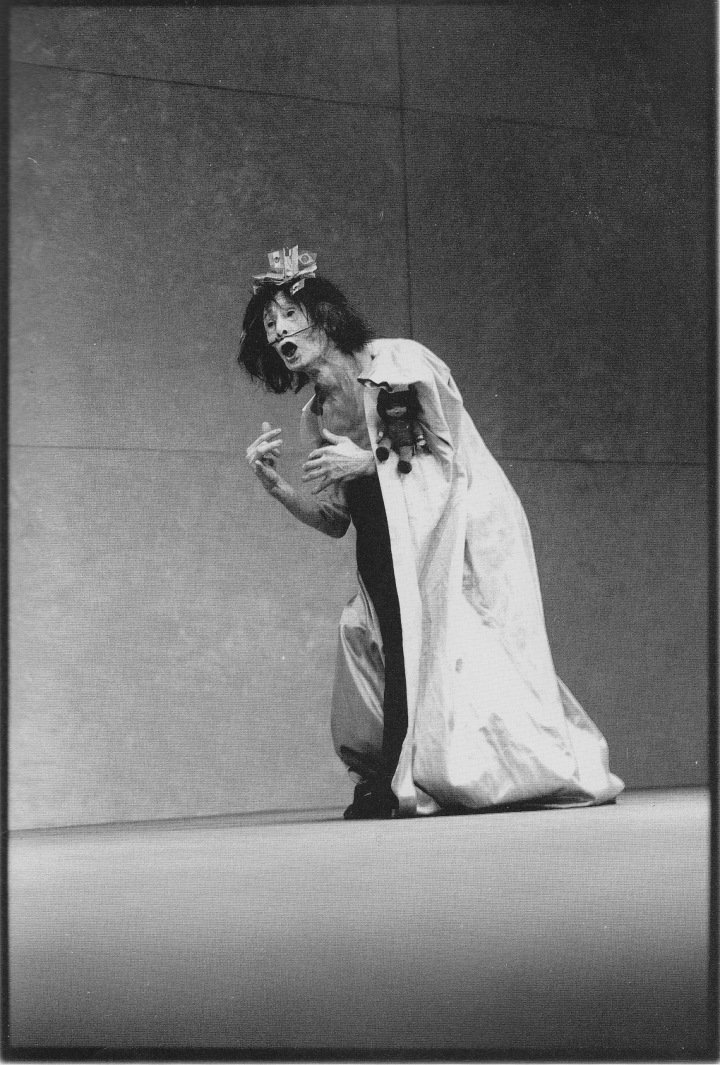
Kazuo Ohno, Dead Sea, 1985. Photograph by Nourit Masson-Sekine. “The dead start running…”
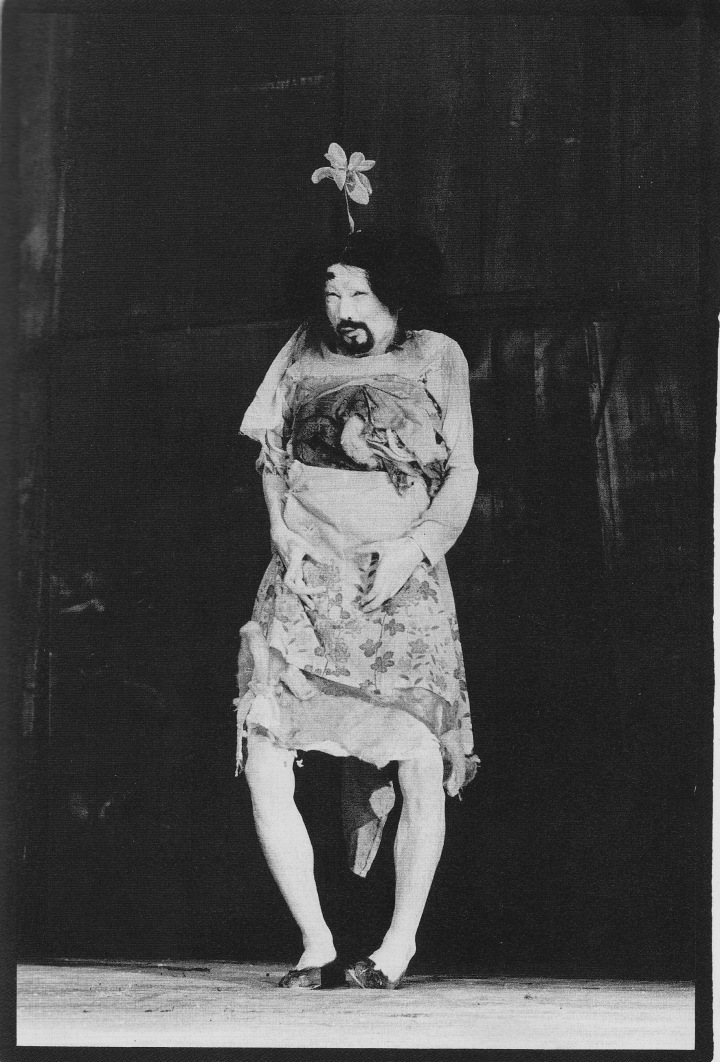
Tatsumi Hijikata, Shizukana le, 1973. Photograph by Makoto Onozuka. “I keep one of my sisters alive in my body when I am absorbed in creating a Butoh piece, she tears off the darkness in my body and eats more than is necessary of it…when she stands up in my body I sit down impulsively.”
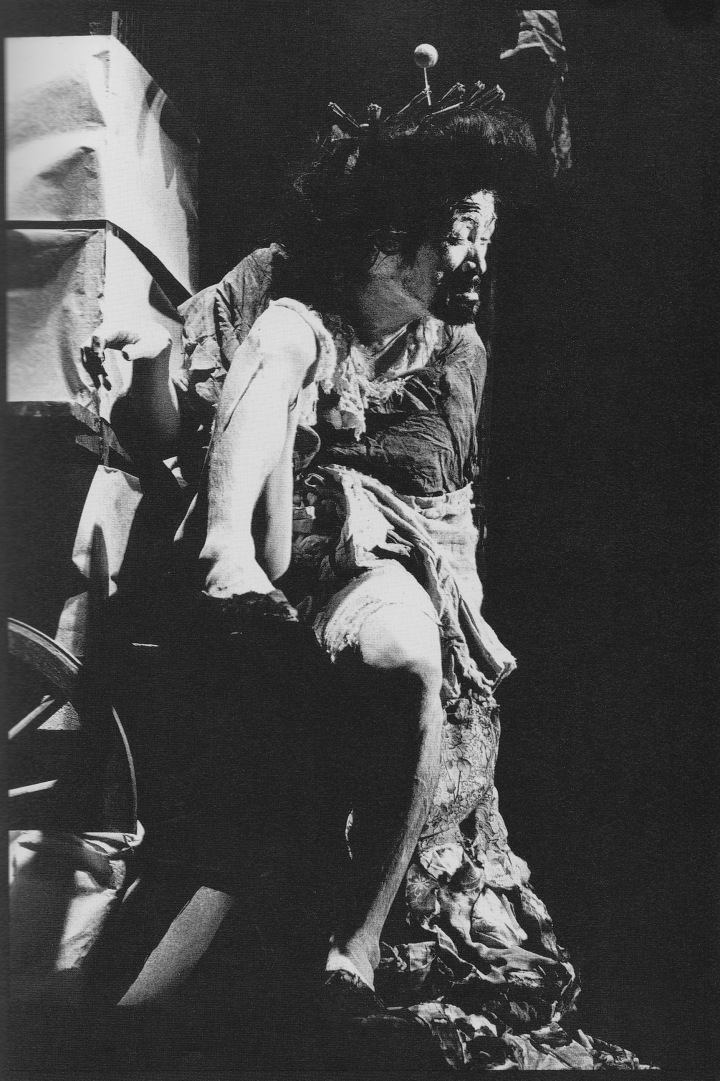
Tatsumi Hijikata, Shizukana le, 1973. Photograph by Makoto Onozuka. “My mother used to say: Run with the heart of the blind.”
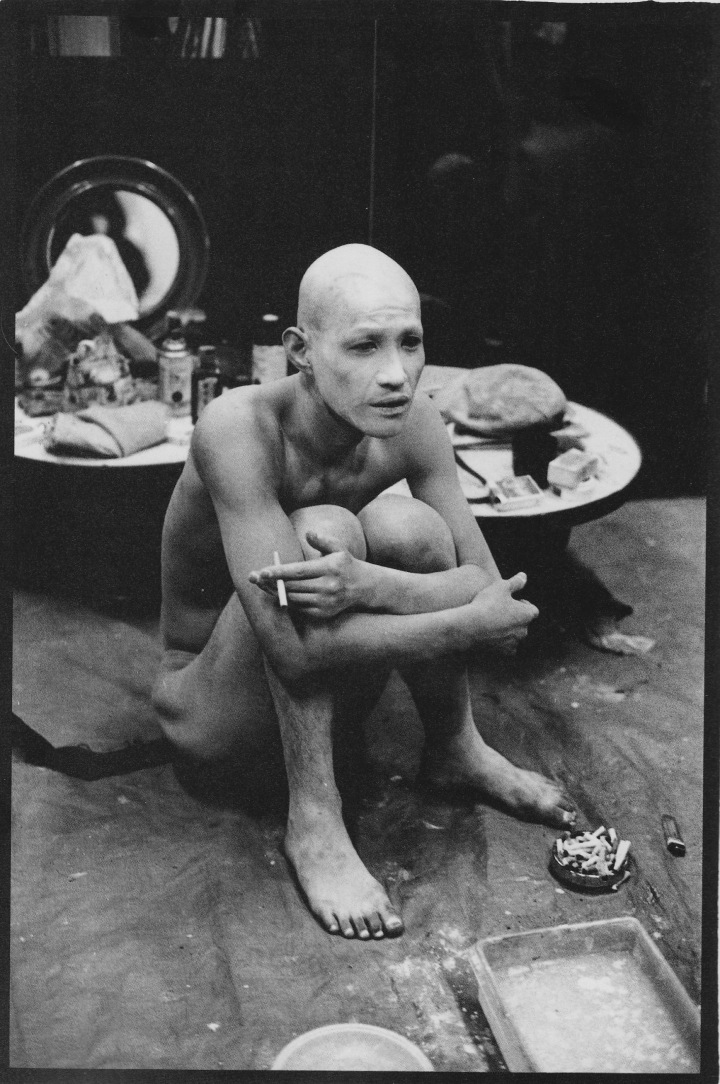
A Dairakuda-Kan member after a performance in their theatre, 1983. Photograph by Nourit Masson-Sekine.
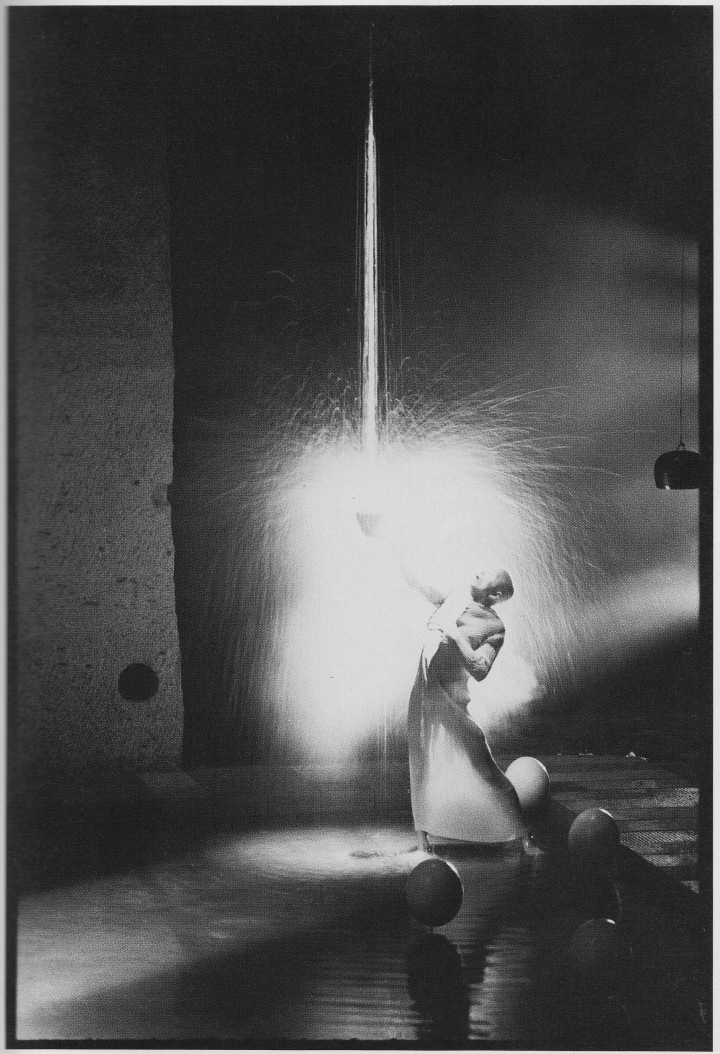
U. Amagatsu, Unetsu. Photograph by Masafumi Sakamoto.

Unetsu. Photograph by Masafumi Sakamoto.
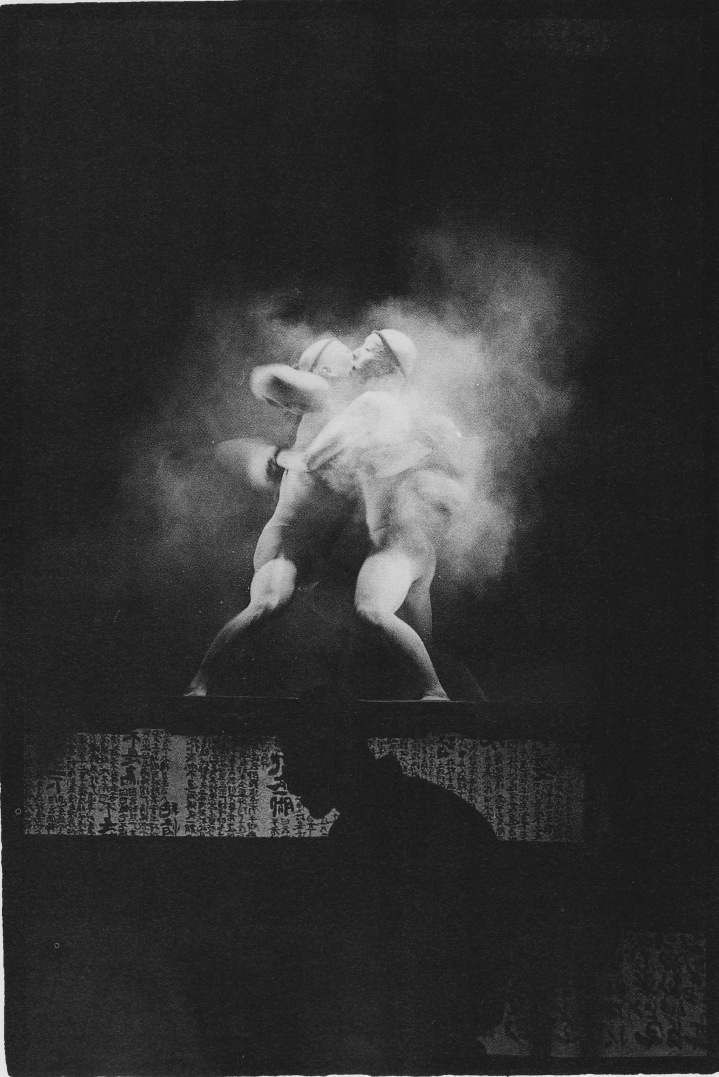
Sebi. Photograph by Mitsutoshi Hanaga.

Ariadone. Photograph by Mitsutoshi Hanaga.
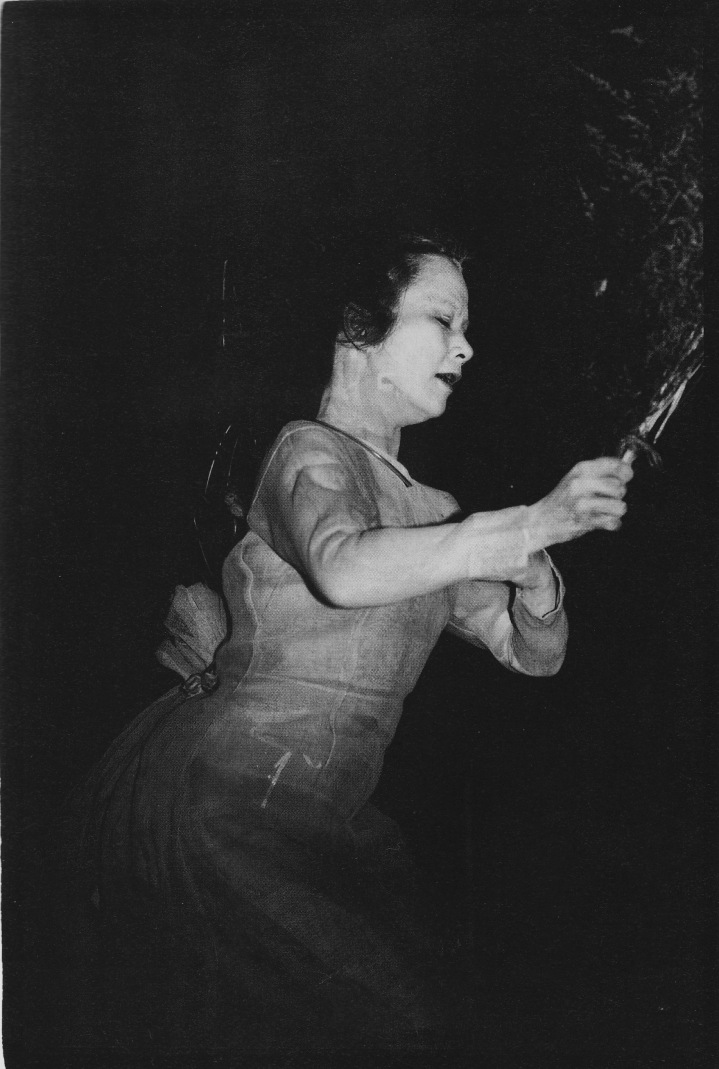
Natsu Nakajima, The Garden, 1982. Photograph by Nourit Masson-Sekine.
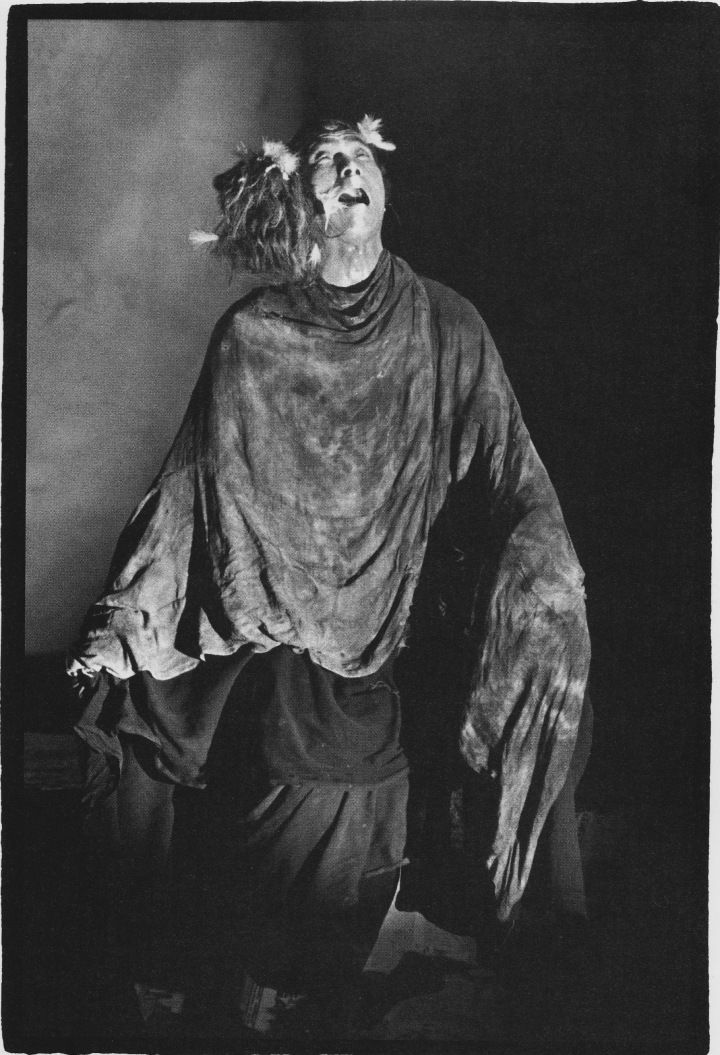
Renai Butoh-ha, choreographed by Tatsumi Hijikata, 1984. Photograph by Masato Okada. “Our bodies love tradition; I feel Butoh when I face my traditional body…Avant-garde is an intense love affair with tradition.” – Min Tanaka.
Emerging from Japan during the turbulent 1960s, Butoh has become one of the major developments of contemporary dance and revolutionized the way in which people view what dance is, and can be. Butoh is a form of expression that draws upon traditional Japanese movements, such as the mincing steps that one must take when wearing a kimono, and by allowing the body to speak for itself through unconscious and improvised movement. By combining these and other elements such as, mime, theatrics, Noh, Kabuki and even the Chinese arts of Chi kung and Tai chi, hybrid movements have developed that belong neither to Western dance nor to traditional Japanese dance. Thus, Butoh’s powerful imagery and its radical new approach have stirred the imagination of a growing audience and become a strong source of inspiration for dancers the world over.
___
Butoh | Shades of Darkness
Jean Viala: Toshiaki Suzuki: Nourit Masson-Sekine
Shufunotomo
1988
___
B
Joseph Beuys and the Celtic World

Joseph Beuys (photographed by Caroline Tisdall).

Beuys completing the Brain of Europe drawing for his Hearth installation at the Royal Feldman Gallery, New York 1975 (photographed by Caroline Tisdall).

Beuys at Sandycove, where James Joyce lived before leaving Ireland for Europe (photographed by Caroline Tisdall).

Beuys investigating the plant life of Ireland, November 1974 (photographed by Caroline Tisdall).

Performing Celtic (Kinloch Rannoch) Scottish Symphony, 1970 (photographed by Richard Demarco).


Beuys at the Giant’s Causeway, Antrim, Northern Ireland, c.1970 (photographed by Caroline Tisdall).

Forrest Hill Poorhouse doors, c.1980 (photographed by Caroline Tisdall).
Caroline Tisdall in conversation with Sean Rainbird, 2001.
Sean Rainbird: Is there a single work in the Bits and Pieces collection that has an especial importance for you?
Caroline Tisdall: There are many themes running through the collection; lots about alchemy, humour, about plants and the transformation of energy. Interconnecting Vases [Two Vases with Precious Water 1975] is probably one of the definitive images in this collection. It was made with blood and insulin, when Beuys was in hospital in 1975 following his heart attack. He was having treatment in Düsseldorf before he went to the spa in Bad Rothenfelde.
SR: So it commemorates a private event, when his health was endangered and he was physically at his most vulnerable?
CT: It is a symbol of love, friendship and reciprocity. ‘C’ and ‘D’ [Cosmas and Damian] with the cross, the triangle and, at the bottom ‘J’ and ‘C’, which could be Joseph and Caroline. The triangle is usually a trinity symbol. In all my earlier writings, I must confess I rather suppressed the Christian angle, but should acknowledge it more now. We did talk about it a lot. Fundamental to his work was the transformation of material and I think you almost have to be brought up a Catholic to use that as a creative principal.
I am a Celt and a total pagan. We often talked about spirituality. By the 1980’s he was certainly not a practicing Catholic. … But there were many elements of Catholicism he kept, like the reincarnation of souls. He also had some fundamental ideas about death and what it means as a destination. In this collection, on an ironic level, is the Hat For Next Time [1974]. After his encounter with the Dalai Lama in 1975 he was very attracted, in later life, to Buddhism. It led to the Amsterdam conference Art meets Science some years later.
It shows in his work with Nam June Paik – particularly the works with the flame. It wasn’t exclusively a Buddhist flame though; think of his saying ‘schütze die Flamme’ (guard the flame). That connects to German philosophy and produces echoes in different cultures. He was confident talking about things which were very difficult to talk about or even taboo; Braunkreuz [‘brown cross’, the distinctive brown pigment Beuys used], the German oak. He felt himself to have grown up in a Catholic, Celtic enclave [in Cleves]. The Lower Rhine is a strange spiritual place, literally quite cut off from Germany like a bend in the river.
SR: What part does language play in this?
CT: He was very deeply rooted in the German language. His whole idea of rehabilitating Germanic imagery and symbols was because he felt that any country which cannot look at its own history is built on foundations of sand and will turn more and more to modern materialism which completely denies spirituality. He felt that was really dangerous not only because of materialism, but also because of a backlash; politically, a spin back into neo-Nazism. One so wishes he had been there when Germany was reunified [in 1989] and the whole spiritual vacuum was exposed, comparing the legacy of both forms of materialism; capitalist materialism and de-spiritualised, grey, Eastern materialism.
SR: Do these sentiments come to a head in any place in Germany you visited, or in any symbolic taboos he confronted?
CT: We went to Externstein in 1975 when he was still recovering from his heart attack. It was a day trip to an absolute taboo place, as it was one of Hitler’s shrines to the Germanic spirit. All the Germanic gods were meant to be there; one of those fat fertility goddesses was dug up there. He wanted his photograph taken with his hand over his heart. What came out was a de-politicized image. It was tongue-in-cheek but like an oath-swearing gesture. He has the confidence to do that. just like the 7000 Oaks project [1982, Kassel] which was growing in his mind at the time. The oak is the symbol that you find on the Iron Cross [a military decoration]. The Nazis had really tried to subsume it into their hierarchy of symbols. As Beuys always said, it is terrible to deny the ‘oakness’ of your countryside just because of the Nazis. If you do that, you deny your own culture, your own history. In Bits and Pieces, the earliest work is an oak-leaf drawing from 1957, a collage, the earliest I have ever seen [Untitled]. I think it is an incredible drawing, so perfect. It has his old-fashioned signature, the early sort, on the bottom right.
SR: Can his use of Braunkreuz be viewed in light of your comments about national identity?
CT: The same goes for that brown colour. That terrible Nazi thing of ‘blood and earth’ [Blut und Boden]. He actually dared to take materials like that and use them, and he reinstalled them in the canon of their ‘Germanness’.
…
SR: I have always been intrigued by his use of Gothic script at certain points in his career.
CT: Gothic script has its own history. If we were German we would feel sad it fell of of use because of the Nazis. Beuys wanted to undermine the misuses and reappropriate the sources. You have to remember Heinrich Böll too, doing a huge examination of the German spirit in his writing, in books like The Lost Honour of Katharine Blum and Faces of a Clown.
SR: How well did they know one another?
CT: Beuy’s friendship with Böll was very significant. You can follow it through the decades. Böll always used to apologize for being boring! Beuys always had difficulty reading his work, of getting beyond Chapter One. They knew each other well enough for him to feel how it went on after that. The Organization for Direct Democracy through Referendum and the Free International University for Interdisciplinary Research [FIU] were both collaboration with Heinrich Böll. It was was great for Beuys to have a kindred spirit like that on his level, and vice versa…
…
SR: At what point did he intimate that he was building a collection for you. Or did it become obvious over time that this was happening?
CT: That’s a very interesting question. I’ve never thought about it. Everything with Beuys happened in such a natural way, but I imagine that by the time whole sets of things came, like the four botanical drawings Rosemary, Calendula (Marigold), Nasturtium, Pomegranate [all 1975], he was obviously building up to something. Rosemary is obviously for remembrance. And he was very fond of my mother, who was a Shakespearean actress in her younger days. And I was born in Stratford-upon-Avon. So rosemary features in the botanical things. Then calendula, which is an incredibly important homeopathic plant. When he sent it it was an amazing orange like the sun.
The collection reflects pretty accurately what was going on while it was being formed. He then actually suggested exhibiting it, and we showed it at Paul Negau’s Generative Art Gallery in 1976. By then it had its main themes: its Celtic and botanic themes, its mystical theme, alchemy and politics. The other thing there from the beginning was his interest in language: plays on words and the examinations of puns, differences between languages and curious things about English. Like the riddle in Three Hares 1975: ‘Drei Hasen und die Ohren drei und doch hat jeder seiner zwei’ (if there are three hares and three ears, how can each hare have two ears?).
…
SR: What strikes me is that it is a very practical lexicon, not a set of instructions, but a densely planted approach to someone’s art. You can read a lot of these objects very directly.
CT: Absolutely. It gives you the homeopathic, the herbal, Rudolf Steiner, biodynamics, concerns with nature as a whole, the environment, the imbalance of the spirit and the material. These run through the whole block.
SR: He seemed to have a special gift of allowing a small object to speak volumes about complex issues and projects.
CT: Take the bandage, for instance, issued to German soldiers during the war [Untitled 1977]. If you put that in a vitrine it becomes monumental; it gives you the theme of the war and a whole phase of his autobiography, and in signing such an object, he claimed it’s whole history.
…
Bits and Pieces 1957-85, [is] a rich body of objects, drawings and multiples compiled over a decade by the artist for the writer and filmmaker Caroline Tisdall. Numbering around 300 items Bits and Pieces constitutes a comprehensive lexicon of the artist’s material and ideas.
___
Joseph Beuys and the Celtic World | Scotland, Ireland and England 1970-85
Sean Rainbird
Tate Publishing
2005
___
R
8 comments